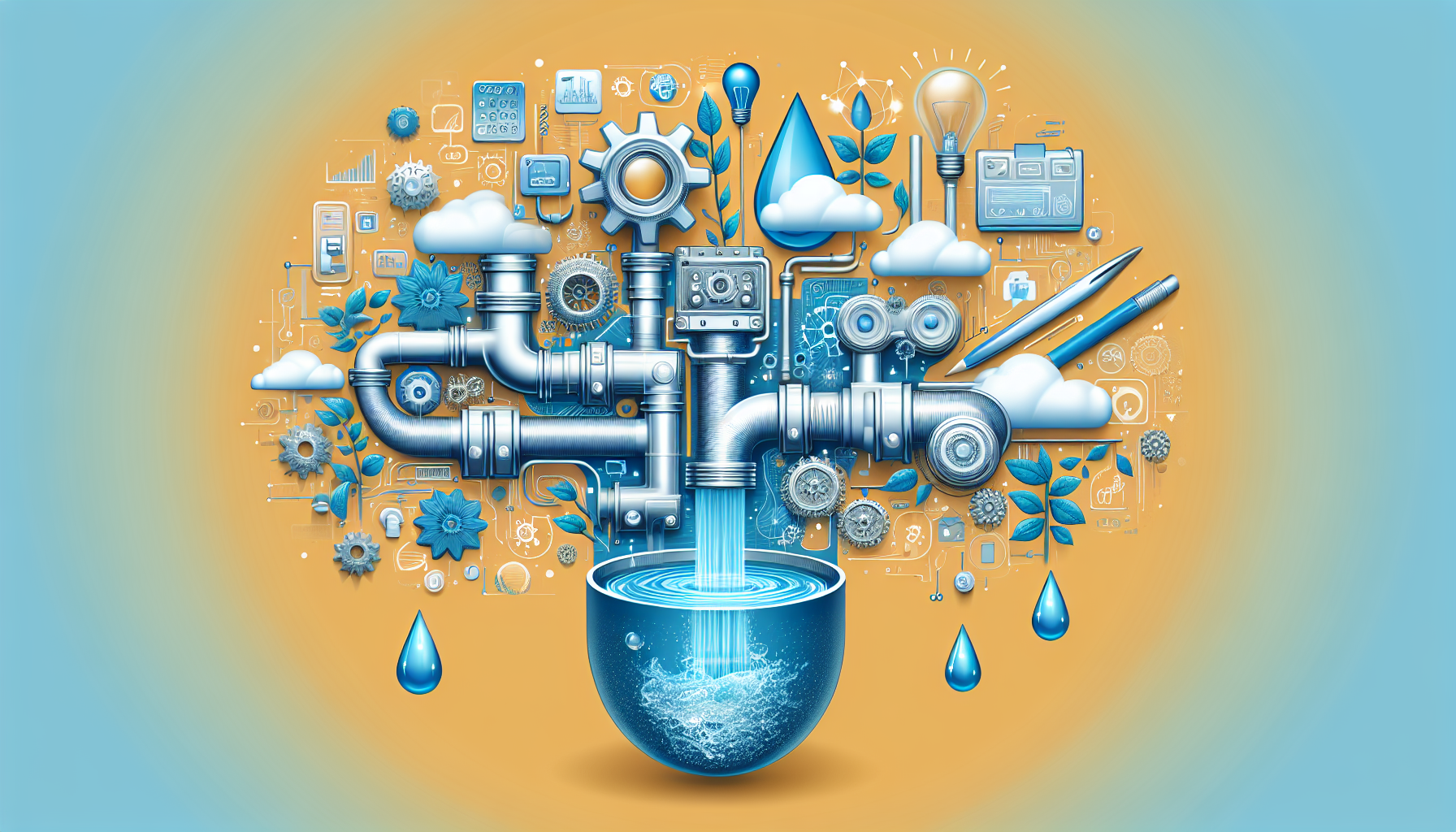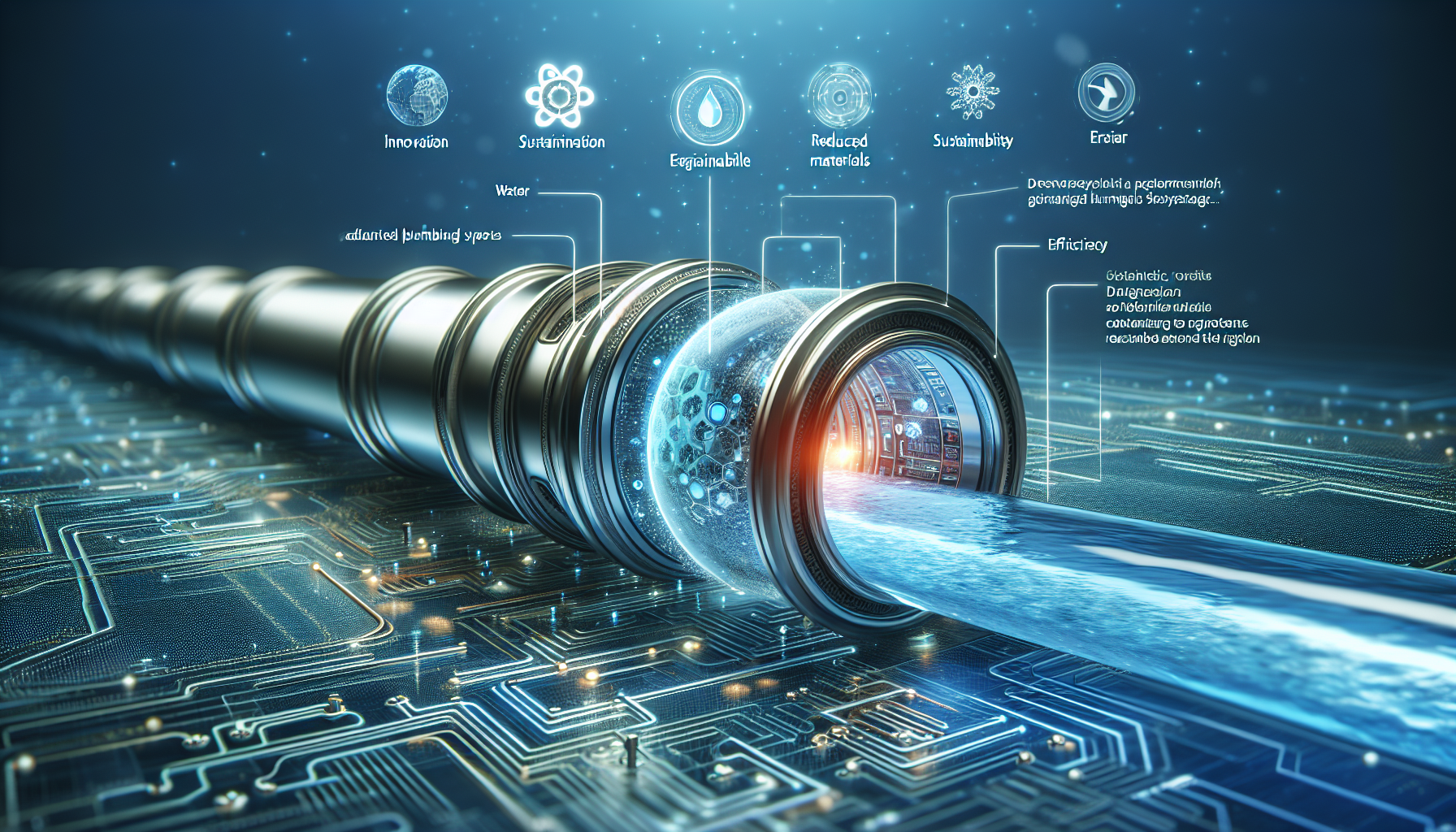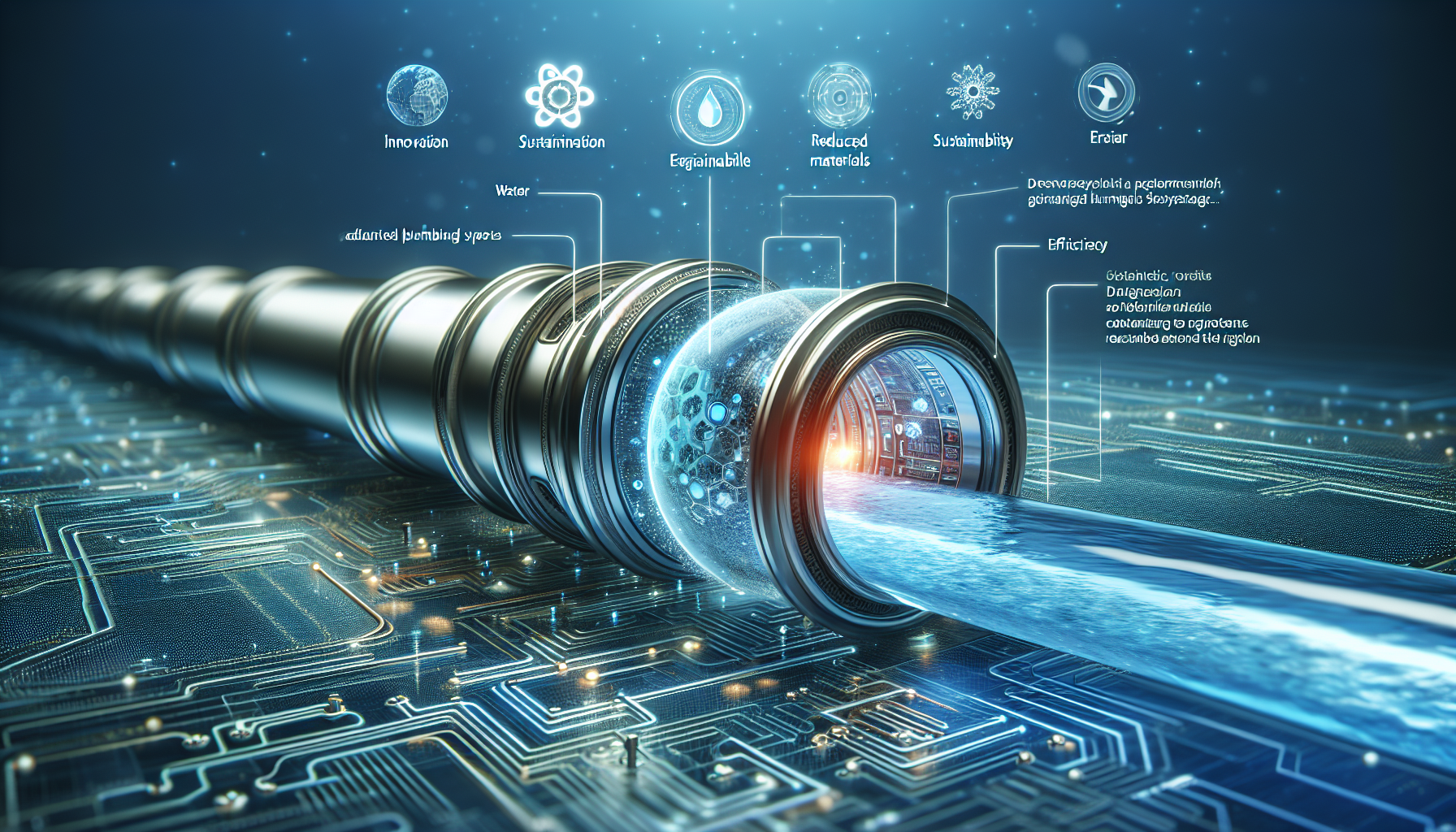In this fascinating article, you will explore the science behind efficient plumbing systems. From understanding how pipes and valves work together seamlessly to the importance of proper water pressure, this article will shed light on the intricate mechanisms that ensure smooth and reliable plumbing in your home. Whether you are a homeowner or simply curious about the inner workings of plumbing, this article will provide you with valuable insights into the science that keeps water flowing effortlessly through your faucets and drains. So, grab a cup of tea and get ready to delve into the fascinating world of plumbing science!

Importance of Efficient Plumbing Systems
Efficient plumbing systems are crucial in today’s world for several reasons. Firstly, they play a vital role in water conservation, as they help minimize water wastage by ensuring that only the necessary amount of water is used for each task. Secondly, these systems contribute to energy efficiency by reducing the energy required to pump and heat water. Lastly, by optimizing water usage and energy consumption, they can lead to significant cost savings for both homeowners and businesses.
Water Conservation
Water scarcity is a global concern, making it essential to implement efficient plumbing systems that help conserve this precious resource. One of the key ways these systems achieve water conservation is through the use of low-flow fixtures and appliances. For example, low-flow toilets can use significantly less water per flush without compromising on performance. Water-efficient showerheads and faucets also control the flow rate, ensuring only the required amount of water is used. By incorporating these fixtures into a plumbing system, you can minimize water wastage and contribute to water conservation efforts.
Energy Efficiency
Efficient plumbing systems also prioritize energy efficiency. Every drop of water that enters your home requires energy for pumping and heating. By reducing the amount of water used, these systems reduce the energy demand. Additionally, they utilize various techniques to minimize energy consumption during water heating processes. For example, hot water recirculation systems reduce the time it takes to get hot water to the tap, thus reducing the amount of cold water wasted while waiting for hot water. By implementing such energy-efficient measures, you can not only reduce your environmental impact but also save on utility bills.
Cost Savings
Efficient plumbing systems can lead to substantial cost savings in the long run. By conserving water and energy, you can lower your monthly water and electricity bills. Low-flow fixtures and water-saving appliances can help you achieve significant water savings, reducing your water usage and the associated costs. Moreover, by minimizing energy consumption, you can save on your heating expenses as well. Though the initial investment in efficient plumbing systems may be higher, the long-term cost savings make it a worthwhile investment.
Design Principles of Efficient Plumbing Systems
Designing an efficient plumbing system requires following specific principles that prioritize water conservation, energy efficiency, and overall system performance. Proper sizing of the pipes is crucial to ensure optimal water flow and pressure throughout the system. Undersized pipes can lead to pressure drops, while oversized pipes are wasteful and unnecessary. By correctly sizing the pipes according to the expected water demand, you can optimize system performance and minimize energy consumption.
Minimizing pressure drops is another essential design principle. Pressure drops occur when water encounters obstacles or restrictions in the plumbing system, reducing its flow rate and overall effectiveness. By carefully selecting and designing the layout of pipes, fittings, and valves, you can minimize pressure drops and maintain efficient water circulation.
Ensuring adequate ventilation is also critical for an efficient plumbing system. Adequate ventilation prevents airlocks and helps maintain the proper flow of water. Ventilation pipes allow air to enter and escape the plumbing system, preventing issues such as siphoning and pressure imbalances. By incorporating proper ventilation into the design, you can prevent potential problems and ensure the proper functioning of the system.
Types of Pipes and Fittings
Choosing the right pipes and fittings for your plumbing system is essential for achieving efficiency and durability. Here are some commonly used types of pipes:
Copper Pipes
Copper pipes have long been a popular choice for plumbing systems due to their durability, resistance to corrosion, and ability to handle high pressures. They have excellent heat conductivity, making them suitable for both hot and cold water supply lines. Copper pipes are also easy to install and maintain, contributing to their widespread use in residential and commercial applications.
PVC Pipes
PVC pipes, made from durable polyvinyl chloride, are an economical choice for plumbing systems. They are lightweight, easy to install, and resistant to corrosion, making them suitable for a variety of applications. PVC pipes are commonly used for drainage systems, as they efficiently transport wastewater. Their smooth interior surface prevents clogs and ensures seamless water flow.
PEX Pipes
PEX (cross-linked polyethylene) pipes have gained popularity in recent years due to their flexibility, durability, and resistance to freezing. They are suitable for both hot and cold water supply, and their flexibility allows for easy installation in tight spaces. PEX pipes also have excellent resistance to scale and chemical corrosion, ensuring long-term performance and efficiency.
Cast Iron Pipes
Cast iron pipes, known for their durability and longevity, have been widely used for sewer and drainage systems. They have excellent resistance to environmental factors and can withstand heavy loads. While they may require professional installation and regular maintenance, cast iron pipes offer efficient and reliable water drainage in both residential and commercial settings.

Efficient Fixtures and Appliances
Efficient plumbing systems go beyond the pipes and fittings and also include the use of water-saving fixtures and appliances. Here are some examples of such fixtures:
Low-Flow Toilets
Low-flow toilets are designed to use less water per flush compared to traditional toilets, without compromising on performance. They incorporate technologies such as dual flush mechanisms or pressure-assisted flushing to reduce water usage. With low-flow toilets, you can significantly reduce water waste and contribute to water conservation without sacrificing functionality.
Water-Efficient Showerheads
Water-efficient showerheads are designed to limit the flow rate of water without sacrificing the shower experience. These showerheads use aerators or flow restrictors to reduce water usage by maintaining a consistent water pressure. By installing a water-efficient showerhead, you can enjoy a refreshing shower while conserving water and energy.
Water-Saving Faucets
Water-saving faucets, similar to water-efficient showerheads, use aerators or flow restrictors to reduce water consumption. These faucets maintain a good flow rate while conserving water by mixing air into the water stream. By using water-saving faucets in your sinks and basins, you can save water without compromising on functionality.
Water Distribution System Design
Efficient water distribution system design is crucial for ensuring optimal performance and consistent water supply throughout your home or building. Here are some key aspects to consider:
Loop System vs. Branch System
In a loop system, the hot water pipes form a closed loop, circulating hot water to all fixtures. This design reduces the time it takes to get hot water to the taps, minimizing water wastage. On the other hand, a branch system involves direct supply lines to each fixture, eliminating the need for hot water circulation. While both systems have their advantages, the choice depends on factors such as the size of the building and water usage patterns.
Pressure Regulating Valves
Pressure regulating valves help maintain consistent water pressure throughout the plumbing system. They prevent excessive pressure that can lead to pipe leaks, bursts, or unnecessary water consumption. By installing pressure regulating valves, you can ensure the optimal functioning of your plumbing system while minimizing the risk of damage.
Hot Water Recirculation
Hot water recirculation systems circulate hot water continuously, eliminating the need to wait for hot water at the taps. By reducing the time and water wasted while waiting for hot water, they contribute to both water conservation and energy efficiency. Hot water recirculation systems can be designed with various strategies, such as dedicated return lines or recirculation pumps, depending on the specific needs of the building.
Drainage System Design
Efficiency in drainage system design is essential to ensure quick and effective removal of wastewater. Here are some key considerations:
Proper Slope
Proper slope is crucial in a drainage system to ensure the easy flow of wastewater. Adequate slope allows gravity to assist in the smooth drainage of water, preventing standing water and potential clogs. Properly sloped pipes and fittings facilitate efficient wastewater removal and help maintain a healthy plumbing system.
Traps and Vents
Traps are U-shaped components in plumbing systems that prevent sewer gases from entering the building by creating a water seal. Traps also help to remove debris and potential clogs from the drainage system. Vents, on the other hand, allow air to enter the plumbing system, preventing airlocks and maintaining the proper flow of water. Both traps and vents are essential for efficient drainage system design, ensuring proper functioning and preventing common issues.
Sewer Ejector Systems
In some cases, buildings may have fixtures located below the main sewer line or below the level of the drainage exit point. In such situations, sewer ejector systems are used to pump wastewater to a higher elevation or longer distance. These systems are designed to handle solids and provide efficient removal of wastewater from lower levels, ensuring proper functioning of the drainage system.
Water Treatment and Filtration
Water treatment and filtration systems play a significant role in ensuring the quality of water supplied to your plumbing system. Here are some commonly used systems:
Water Softeners
Water softeners are used to remove minerals, such as calcium and magnesium, from the water. These minerals can cause scale buildup in pipes and appliances, reducing their efficiency and lifespan. By installing a water softener, you can prevent scale buildup and improve the performance and longevity of your plumbing system.
Carbon Filters
Carbon filters are effective in removing chlorine, sediment, and other impurities from the water supply. These filters improve the taste and odor of the water while providing additional protection for your plumbing system. Carbon filters are commonly used in combination with other water treatment systems to ensure clean and safe water.
Reverse Osmosis Systems
Reverse osmosis systems are advanced water filtration systems that remove a wide range of impurities from the water, including bacteria, viruses, and dissolved minerals. These systems use a semi-permeable membrane to filter the water, ensuring high-quality and clean drinking water. Reverse osmosis systems are often installed for drinking water faucets but can also be used for the entire household.
Maintenance and Service
Regular maintenance and service are essential to ensure the continued efficiency and performance of your plumbing system. Here are some key aspects of maintenance:
Regular Inspections
Regular inspections of your plumbing system help identify any potential issues early on. By inspecting pipes, fixtures, and connections, you can detect leaks, clogs, or corrosion before they become significant problems. It is recommended to have a professional plumber inspect your system at least once a year to ensure everything is in good working condition.
Proactive Leak Detection
Detecting and addressing leaks promptly are essential for preventing water wastage and potential damage to your property. Proactive leak detection techniques, such as regular visual inspections and the use of leak detection devices, can help identify hidden leaks that may otherwise go unnoticed. By addressing leaks early, you can save water, avoid costly repairs, and maintain the efficiency of your plumbing system.
Drain Cleaning
Regular drain cleaning is necessary to prevent clogs and maintain the optimal functioning of your drainage system. Over time, debris, hair, and other substances can accumulate in drains, leading to slow drainage or complete blockages. Professional drain cleaning services can remove these obstructions, ensuring efficient water flow and preventing plumbing issues.
Smart Technologies in Plumbing Systems
Advancements in technology have revolutionized plumbing systems, allowing for greater efficiency and control. Here are some smart technologies used in plumbing systems:
Smart Leak Detection Devices
Smart leak detection devices use sensors and wireless connectivity to monitor water flow and detect leaks. These devices can send real-time alerts to your smartphone or other connected devices, allowing you to take immediate action. By detecting leaks early, these devices help prevent water damage and unnecessary water wastage.
Water Usage Monitoring Systems
Water usage monitoring systems provide real-time data on your water consumption. These systems track water usage at different fixtures and provide insights into your water consumption patterns. By understanding your usage habits, you can identify areas for improvement and take steps to conserve water effectively.
Remote Valve Control
Remote valve control systems allow you to control the water supply to different fixtures or sections of your plumbing system remotely. Through smartphone apps or other control interfaces, you can turn off or adjust water flow to specific areas of your home or building. Remote valve control systems provide convenience, water savings, and efficient management of your plumbing system.
Future Trends in Plumbing Systems
As technology continues to advance, new trends emerge in the field of plumbing systems. Here are some future trends to look out for:
Gray Water Recycling
Gray water recycling involves treating and reusing wastewater from non-toilet fixtures such as sinks, showers, and laundry. By treating and repurposing gray water for tasks such as irrigation or toilet flushing, this approach reduces the demand for freshwater. Gray water recycling systems can be integrated into plumbing systems to promote sustainable water usage and minimize water wastage.
Geothermal Heat Exchangers
Geothermal heat exchangers use the constant temperature of the earth to regulate water temperature. These systems utilize heat pumps and underground pipes to transfer heat from the earth to the water supply, reducing the energy required for water heating. Geothermal heat exchangers offer energy-efficient solutions for hot water supply and contribute to overall energy conservation.
Hydroponic Plumbing Systems
Hydroponic plumbing systems combine water supply and nutrient distribution for hydroponic gardening. These systems provide a controlled environment for growing plants without soil, using water and nutrient solutions instead. By integrating hydroponic plumbing systems into buildings, urban agriculture can be promoted, allowing for efficient food production and the utilization of unused spaces.
Efficient plumbing systems are crucial for conserving water, saving energy, and reducing costs. From the design principles to the materials and fixtures used, every aspect of a plumbing system can contribute to its overall efficiency. By implementing efficient plumbing systems and adopting smart technologies, we can create sustainable and future-ready solutions that benefit both the environment and our wallets. So, whether you’re building a new home or upgrading an existing system, prioritize efficiency in your plumbing choices and enjoy the benefits it brings!

